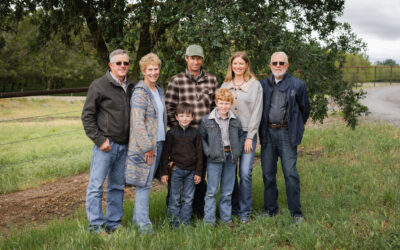
DNA: an arriving tool for beef cattle
by Miranda Reiman
Right now, it’s hard to imagine how future tools will change the beef cowherd.
Today, heifer development costs are high and getting higher as ranch profit goals demand efficiency while consumers want quality.
DNA technology is one of the emerging solutions for beef production, in line with the role it has played in agronomy.
“It takes so much time to develop a herd of cattle—a lifetime, honestly—that’s designed to be feed-efficient or have high reproduction,” says Cody Jorgensen, of Jorgensen Land and Cattle, Ideal, So. Dak. “The more knowledge you have about DNA to help you make the right decision, the better.”
His family has DNA-tested standout Angus bulls and donor cows for years, but he plans to step it up a notch this fall.
“It’s going to be a tremendous tool to add, along with the quantitative genetic research that we do,” Jorgensen says. And although the registered cattle world will be quicker to use the tool, he says the new lower-density, lower-cost tests “could impact commercial cattle heavily.”
“Data is a power,” he says. “You get a lot of cost and time and energy stuck into a bred female, and every day that it maybe in the wrong group, it’s very expensive. If a guy knew early in a calf’s life if it had the abilities we want, it would definitely improve the costs of raising replacement heifers.”

“Just a few percentage changes in fertility would have a much higher impact in whole-system profitability than most of these carcass measures we’re talking about,” he says.
The Angus breed is working on measuring longevity and survivability currently.
“Once you get data and ways to measure traits like that, then a DNA test is soon to follow,” Bowman says.
Jorgensen dreams of a system similar to what has shaped the crop side of their business.
“If we could genetically select for all the things that challenge us—if that’s the fescue grass or the elevation—if we could understand DNA that could handle that type of environment or that was resistant to respiratory disease—just imagine that. It would be a game changer.”
E. coliresistance. Fertility. Ability to handle “hot” rations. Tests for these traits are all on the horizon.
“Any places we can increase efficiency by selling one more calf, because we have one more fertile female,” Kuehn says, “or have one more calf sold for slaughter because he made it through the feedlot without respiratory disease, or fewer food-borne pathogens are advantageous—those sorts of changes are a boon for the industry in terms of perception and environmental footprint.”
Jorgensen has been pulling DNA samples for their files, “just in case” they want to analyze them.
“It’s not like the poultry or swine business where they can do 2.4 turns per year,” he says.“You just can’t make that much progress in a year’s time. It’s critical to know whether those cattle will do it or not.”
It matters to individual ranchers and to those further down the beef production chain.
“Meat demand is not going down, especially worldwide, Kuehn says. “It’ll take focus if we’re going to keep beef competitive to other protein sources.”
You may also like
Legacy in the Golden Land
On a quiet stretch of Northern California rangeland, a different story unfolds. The Borror family’s legacy modestly speaks through the cattle they raise, the ground they steward. The generations who’ve made a life here demonstrate commitment to doing things right, even when no one is watching.
Purpose Follows Passion
A chance opportunity. A change in career direction. And meat science was changed forever. Dr. Gary Smith originally had no plans to become a meat scientist. But thank goodness he did.
Marbling, Feet and Fertility: Are they related?
The Angus breed has enough genetic diversity to allow breeders, and their commercial bull customers, to make progress across multiple traits simultaneously. One bloodline may be high in marbling but does not check the boxes you need for other traits. That does not mean marbling is the cause—it simply means your search for the ideal genetic pairing is not done.



